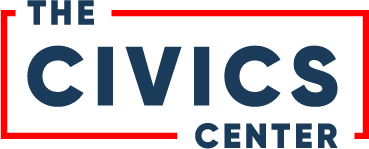The Freedom to Vote Act: what it can and can’t do for Gen Z
Even though the 26th Amendment created a constitutional right to vote beginning at age 18 and granted Congress the power to enforce this right through legislation, Congress has done little to enforce youth voting rights. Some states, in the meantime, have been passing laws that make it harder for young people to register and vote. We call that youth voter suppression.
The Freedom to Vote Act (FTVA), introduced in Congress last week, is a landmark bill to strengthen our democracy. Aimed primarily at countering the growing tide of state laws that make it harder for BIPOC people to register and vote, the FTVA will also lift obstacles to voting and voter registration that present special challenges for young people.
So how would the FTVA help young voters? Here’s an overview.
FTVA: Voter Registration
At the registration phase, the Act would require states to implement:
Each of these interventions helps to remove significant friction in the registration process that impacts young voters more heavily than older voters because young voters move at higher rates than older voters and often face logistical and timing challenges in registering to vote.
The Act would also require states to allow young people to preregister to vote as soon as they turn 16. We believe this is a critical aspect to welcoming our young people to American democracy. High school students are busy people! They should have ample time and opportunity to accomplish this critical civic endeavor, so that they are ready to cast their ballots the moment they turn 18.
Today, roughly 50% of high school students live in states that allow preregistration at 16. These are not just “blue” states like California and New York, but also “purple” and “red” states like Utah, Florida, Colorado, Maine, North Carolina, Virginia, and Louisiana.
FTVA: Voting Access
The Act would also remove some of the most serious obstacles young people face when they go to cast a ballot. It requires states to offer:
Early voting
Election Day as a public holiday
States with ID requirements would be required to accept both college and high school IDs
Since young people are in school all day, early voting and a public holiday would give them more time. Additionally, state voter ID laws place a special burden on young people, who often do not drive and can have trouble obtaining the necessary documentation.
You can email your Senator and Member of Congress through this online form to urge them to support the FTVA and remove the many obstacles standing in the way of voter access.
State and Local Interventions
Let’s not be naïve, though. As necessary and just as the FTVA is, it failed in the last session of Congress, and it has little chance of passing today.
What is needed to get pro-democracy legislation through Congress, or any elected body, is people in power who support democracy and voting rights. The pathway to that achievement is helping everyone who believes in democracy to register and vote. If federal legislation is unachievable, state and local efforts can go a long way and can make a comprehensive federal solution more likely in the long run.
While we wait and work for a federal solution, states must create their own pro-democracy legislation.
Preregistration should be high on the list since registration is one of the most significant obstacles to youth participation. Higher levels of registration correlate with higher levels of turnout, and states where youth have greater access to preregistration see higher levels of youth turnout.
Would-be candidates and their supporters study voter files closely to figure out if they can win. The single act of young people registering in high numbers can change the calculus for a potential candidate trying to evaluate whether they should run in the first place. It can change the calculus for donors evaluating whether a candidate is viable. When young people are not registered, they are politically invisible. Once students are in the voter file, candidates and campaigns can see them and know how to reach them.
So, if we can’t have federal legislation today, states that don’t already allow preregistration at age 16 can change their laws to do so. The same is true for voting reforms of state voter ID laws, and online, automatic, and same-day registration, early voting, and creating a holiday to encourage voting.
If your state does not have helpful laws on these topics, go ahead and track down your state representatives and ask them to enact better state laws to protect democracy. You can even forward a link to this post along with your message. Thanks to the League of Women Voters for their great legislator look-up tool.
Pending State Legislation You Can Support Today
In Michigan, you can contact your representative through this online form to ask them to support House Bill 4569 to allow preregistration at 16.
In Pennsylvania, you can fill out this online form to ask them to support House Bill 403 to create preregistration at age 16 in PA.
In New York, the state has preregistration for 16- and 17-year-olds, but only 16.5% of this age group is preregistered. New Yorkers can ask Governor Kathy Hochul to sign S1733A, which has passed both houses, to require better coordination between schools and election officials to implement the state’s preregistration law.
Here’s another reality check. Legislation is great. But without implementation at the local level and oversight, a law on its own won’t achieve its full potential. The role all of us play in making sure it works is what will matter most.
Stay tuned for my next post on how to make that happen.
